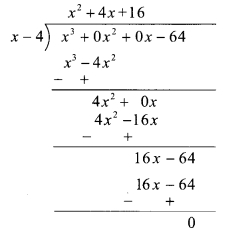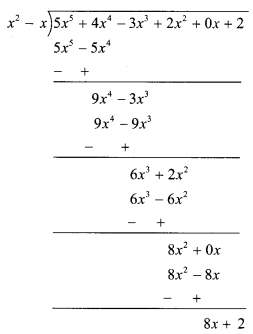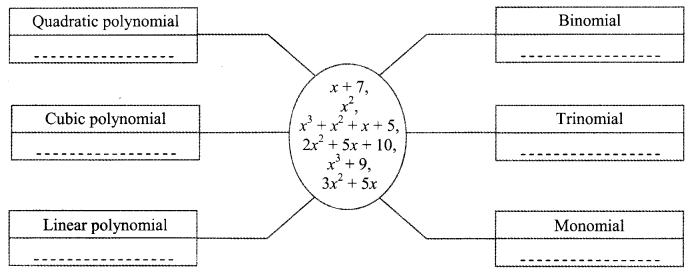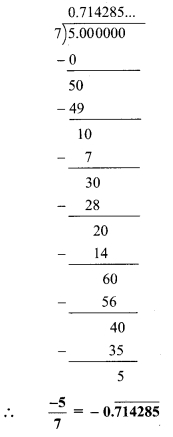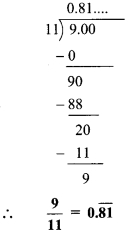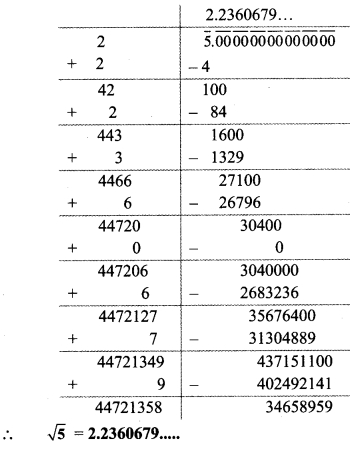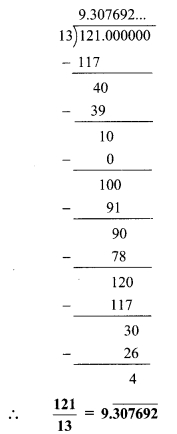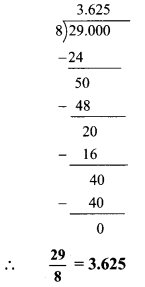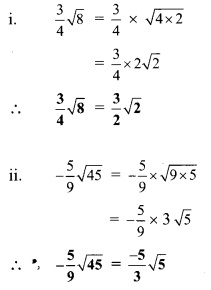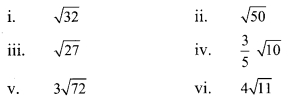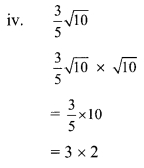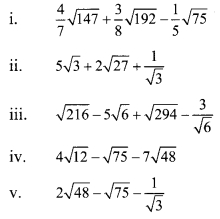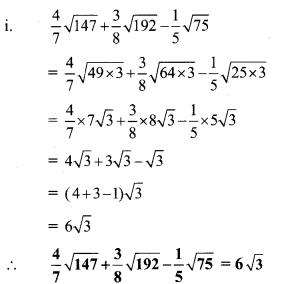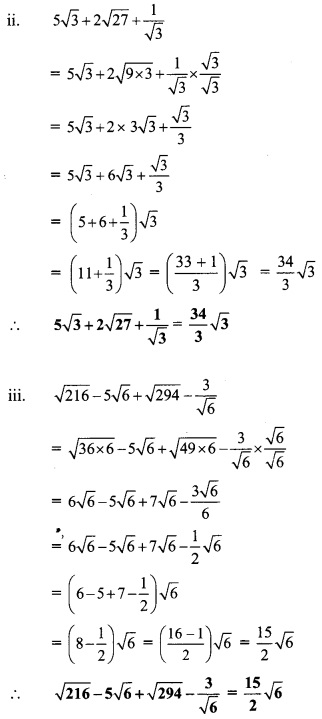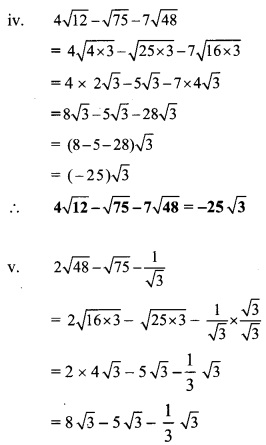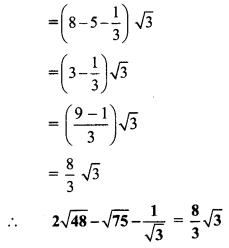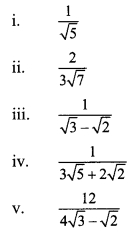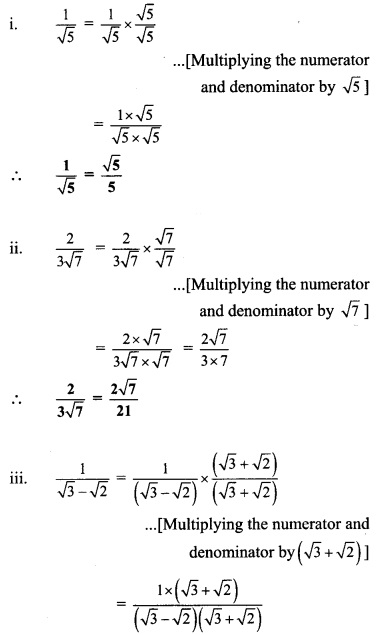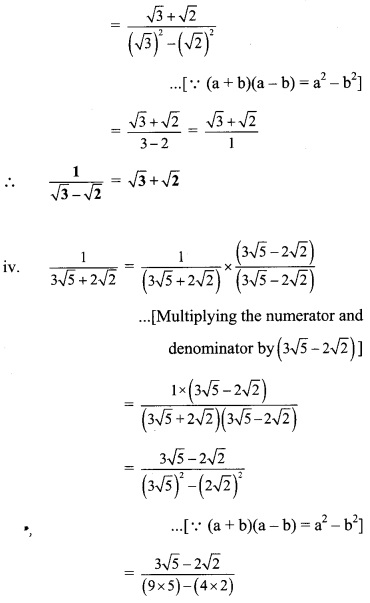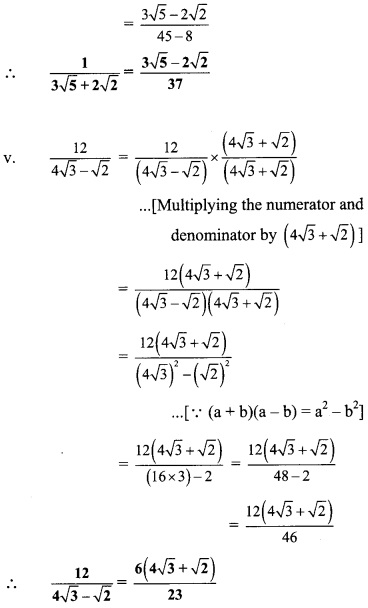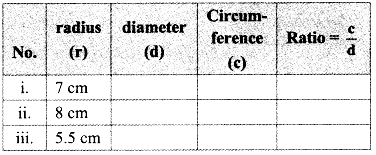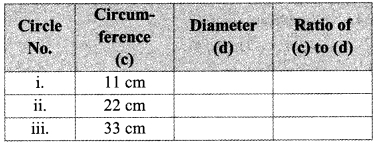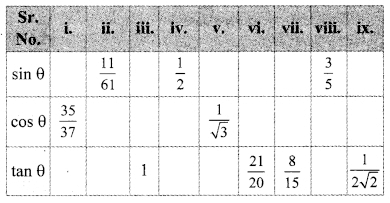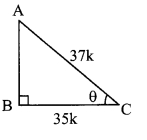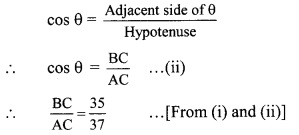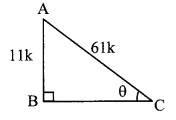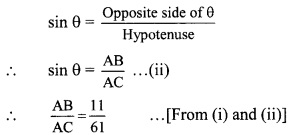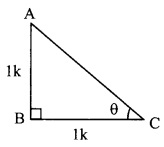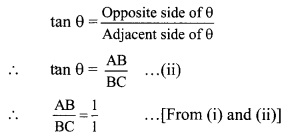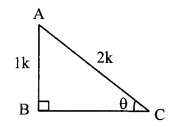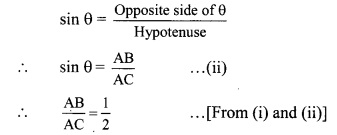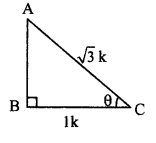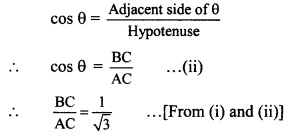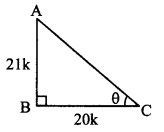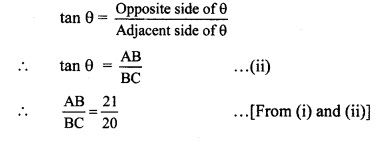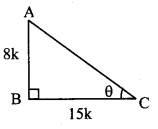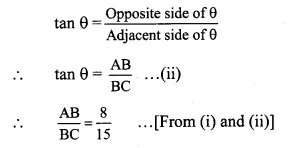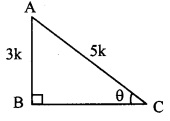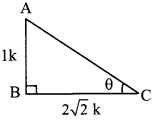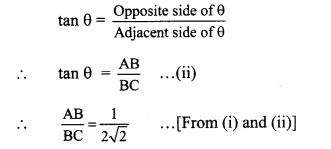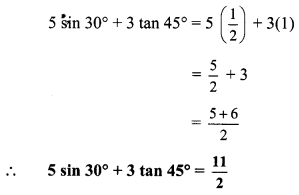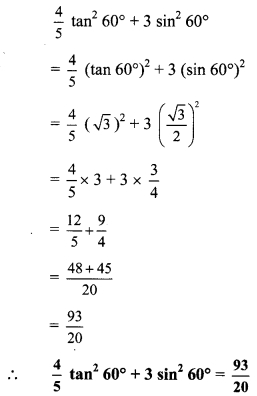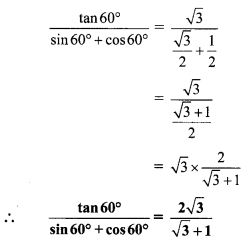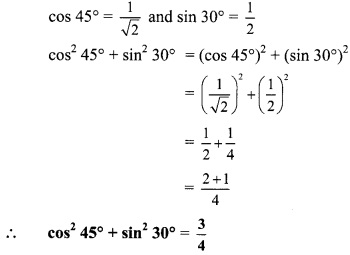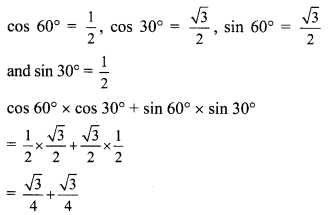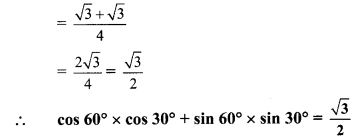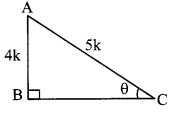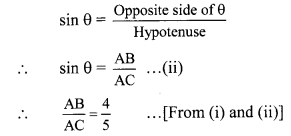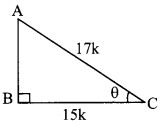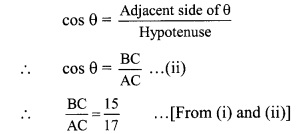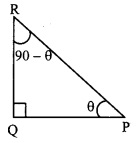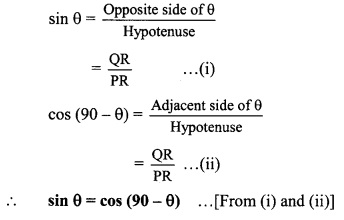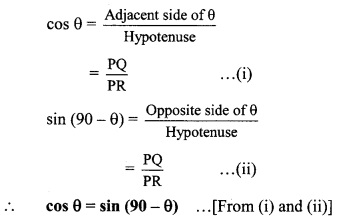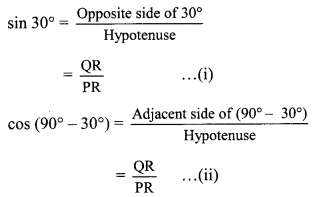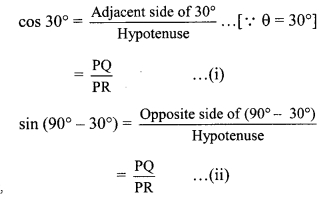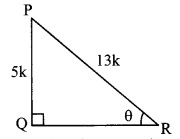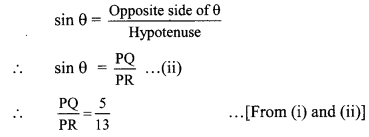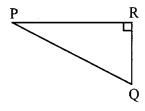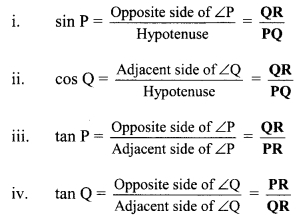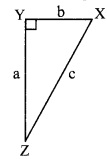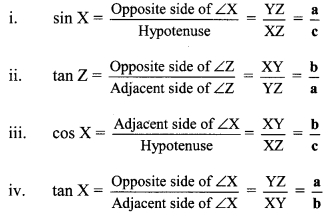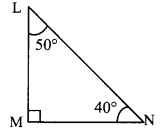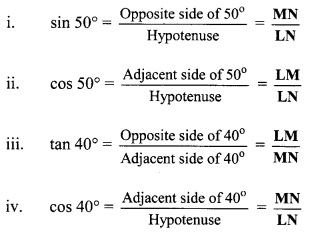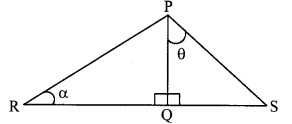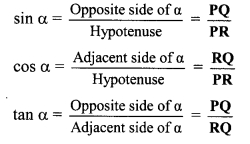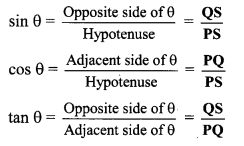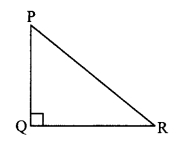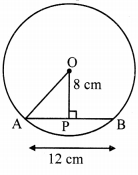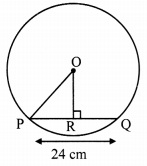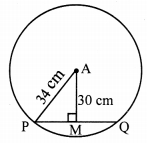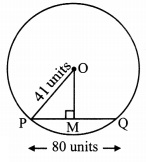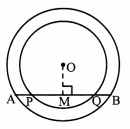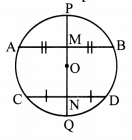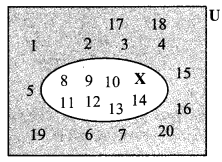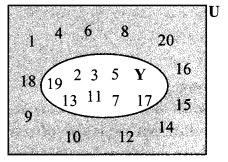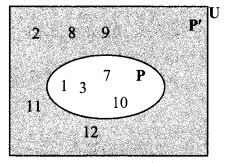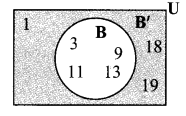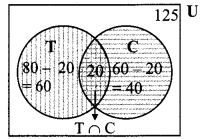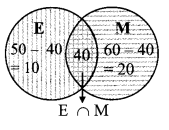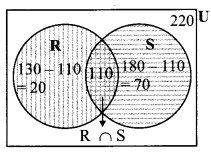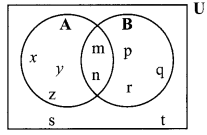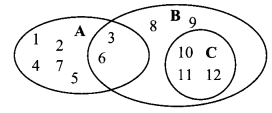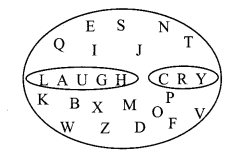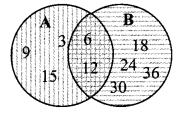Balbharti Maharashtra State Board Class 9 Maths Solutions covers the Practice Set 3.3 Algebra 9th Class Maths Part 1 Answers Solutions Chapter 3 Polynomials.
Practice Set 3.3 Algebra 9th Std Maths Part 1 Answers Chapter 3 Polynomials
Question 1.
Divide each of the following polynomials by synthetic division method and also by linear division method. Write the quotient and the remainder.
i. (2m2 – 3m + 10) ÷ (m – 5)
ii. (x4 + 2x3 + 3x2 + 4x + 5) ÷ (x + 2)
iii. (y3 – 216) ÷ (y – 6)
iv. (2x4 + 3x3 + 4x – 2x2) ÷ (x + 3)
v. (x4 – 3x2 – 8) ÷ (x + 4)
vi. (y3 – 3y2 + 5y – 1) ÷ (y – 1)
Solution:
i. Synthetic division:
(2m2 – 3m + 10) ÷ (m – 5)
Dividend = 2m² – 3m + 10
∴ Coefficient form of dividend = (2, -3, 10)
Divisor = m – 5
∴ Opposite of -5 is 5.

Coefficient form of quotient = (2, 7)
∴ Quotient = 2m + 7,
Remainder = 45
Linear division method:
2m2 – 3m + 10
To get the term 2m2, multiply (m – 5) by 2m and add 10m,
= 2m(m – 5) + 10m- 3m + 10
= 2m(m – 5) + 7m + 10
To get the term 7m, multiply (m – 5) by 7 and add 35
= 2m(m – 5) + 7(m- 5) + 35+ 10
= (m – 5) (2m + 7) + 45
∴ Quotient = 2m + 7,
Remainder = 45
ii. Synthetic division:
(x4 + 2x3 + 3x2 + 4x + 5) ÷ (x + 2)
Dividend = x4 + 2x3 + 3x2 + 4x + 5
∴ Coefficient form of dividend = (1, 2, 3, 4, 5)
Divisor = x + 2
∴ Opposite of + 2 is -2.

Coefficient form of quotient = (1, 0, 3, -2)
∴ Quotient = x3 + 3x – 2,
Remainder = 9
Linear division method:
x4 + 2x3 + 3x2 + 4x + 5
To get the term x4, multiply (x + 2) by x3 and subtract 2x3,
= x3(x + 2) – 2x3 + 2x3 + 3x2 + 4x + 5
= x3(x + 2) + 3x2 + 4x + 5
To get the term 3x2, multiply (x + 2) by 3x and subtract 6x,
= x3(x + 2) + 3x(x + 2) – 6x + 4x + 5
= x3(x + 2) + 3x(x + 2) – 2x + 5
To get the term -2x, multiply (x + 2) by -2 and add 4,
= x3(x + 2) + 3x(x + 2) – 2(x + 2) + 4 + 5
= (x + 2) (x3 + 3x – 2) + 9
∴ Quotient = x3 + 3x – 2,
Remainder – 9
iii. Synthetic division:
(y3 – 216) ÷ (y – 6)
Dividend = y3 – 216
∴ Index form = y3 + 0y3 + 0y – 216
∴ Coefficient form of dividend = (1, 0, 0, -216)
Divisor = y – 6
∴ Opposite of – 6 is 6.

Coefficient form of quotient = (1, 6, 36)
∴ Quotient = y2 + 6y + 36,
Remainder = 0
Linear division method:
y3 – 216
To get the term y3, multiply (y – 6) by y2 and add 6y2,
= y2(y – 6) + 6y2 – 216
= y2(y – 6) + 6ysup>2 – 216
To get the, term 6 y2 multiply (y – 6) by 6y and add 36y,
= y2(y – 6) + 6y(y – 6) + 36y – 216
= y2(y – 6) + 6y(y – 6) + 36y – 216
To get the term 36y, multiply (y- 6) by 36 and add 216,
= y2 (y – 6) + 6y(y – 6) + 36(y – 6) + 216 – 216
= (y – 6) (y2 + 6y + 36) + 0
Quotient = y2 + 6y + 36
Remainder = 0
iv. Synthetic division:
(2x4 + 3x3 + 4x – 2x2) ÷ (x + 3)
Dividend = 2x4 + 3x3 + 4x – 2x2
∴ Index form = 2x4 + 3x3 – 2x2 + 4x + 0
∴ Coefficient form of the dividend = (2,3, -2,4,0)
Divisor = x + 3
∴ Opposite of + 3 is -3

Coefficient form of quotient = (2, -3, 7, -17)
∴ Quotient = 2x3 – 3x2 + 7x – 17,
Remainder = 51
Linear division method:
2x4 + 3x3 + 4x – 2x2 = 2x2 + 3x3 – 2x2 + 4x
To get the term 2x4, multiply (x + 3) by 2x3 and subtract 6x3,
= 2x3(x + 31 – 6x3 + 3x3 – 2x2 + 4x
= 2x3(x + 3) – 3x3 – 2x2 + 4x
To get the term – 3x3, multiply (x + 3) by -3x2 and add 9x2,
= 2x3(x + 3) – 3x2(x + 3) + 9x2 – 2x2 + 4x
= 2x3(x + 3) – 3x2(x + 3) + 7x2 + 4x
To get the term 7x2, multiply (x + 3) by 7x and subtract 21x,
= 2x3(x + 3) – 3x2(x + 3) + 7x(x + 3) – 21x + 4x
= 2x3(x + 3) – 3x2(x + 3) + 7x(x + 3) – 17x
To get the term -17x, multiply (x + 3) by -17 and add 51,
= 2x3(x + 3) – 3x2(x + 3) + 7x(x+3) – 17(x + 3) + 51
= (x + 3) (2x3 – 3x2 + 7x- 17) + 51
∴ Quotient = 2x3 – 3x2 + 7x – 17,
Remainder = 51
v. Synthetic division:
(x4 – 3x2 – 8) + (x + 4)
Dividend = x4 – 3x2 – 8
∴ Index form = x4 + 0x3 – 3x2 + 0x – 8
∴ Coefficient form of the dividend = (1,0, -3,0, -8)
Divisor = x + 4
∴ Opposite of + 4 is -4

∴ Coefficient form of quotient = (1, -4, 13, -52)
∴ Quotient = x3 – 4x2 + 13x – 52,
Remainder = 200
Linear division method:
x4 – 3x2 – 8
To get the term x4, multiply (x + 4) by x3 and subtract 4x3,
= x3(x + 4) – 4x3 – 3x2 – 8
= x3(x + 4) – 4x3 – 3x2 – 8
To get the term – 4x3, multiply (x + 4) by -4x2 and add 16x2,
= x3(x + 4) – 4x2 (x + 4) + 16x2 – 3x2 – 8
= x3(x + 4) – 4x2 (x + 4) + 13x2 – 8
To get the term 13x2, multiply (x + 4) by 13x and subtract 52x,
= x3(x + 4) – 4x2(x + 4) + 13x(x + 4) – 52x – 8
= x3(x + 4) – 4x2(x + 4) + 13x(x + 4) – 52x – 8
To get the term -52x, multiply (x + 4) by – 52 and add 208,
= x3(x + 4) – 4x2(x + 4) + 13x(x + 4) – 52(x + 4) + 208 – 8
= (x + 4) (x3 – 4x2 + 13x – 52) + 200
∴ Quotient = x3 – 4x2 + 13x – 52,
Remainder 200
vi. Synthetic division:
(y3 – 3y2 + 5y – 1) ÷ (y – 1)
Dividend = y3 – 3y2 + 5y – 1
Coefficient form of the dividend = (1, -3, 5, -1)
Divisor = y – 1
∴Opposite of -1 is 1.

∴ Coefficient form of quotient = (1, -2, 3)
∴ Quotient = y2 – 2y + 3,
Remainder = 2
Linear division method:
y3 -3y2 + 5y – 1
To get the term y3 , multiply (y – 1) by y2 and add y2
= y2 (y – 1) + y2 – 3y2 + 5y – 1
= y2 (y – 1) – 2y2 + 5y – 1
To get the term -2y2, multiply (y – 1) by -2y and subtract 2y,
= y2 (y – 1) – 2y(y – 1) – 2y + 5y – 1
= y2 (y – 1) – 2y(y – 1) + 3y – 1
To get the term 3y, multiply (y – 1) by 3 and add 3,
= y2 (y – 1) – 2y(y – 1) + 3(y- 1) + 3 – 1
= (y – 1)(y2 – 2y + 3) + 2
∴ Quotient = y2 – 2y + 3,
Remainder = 2.
